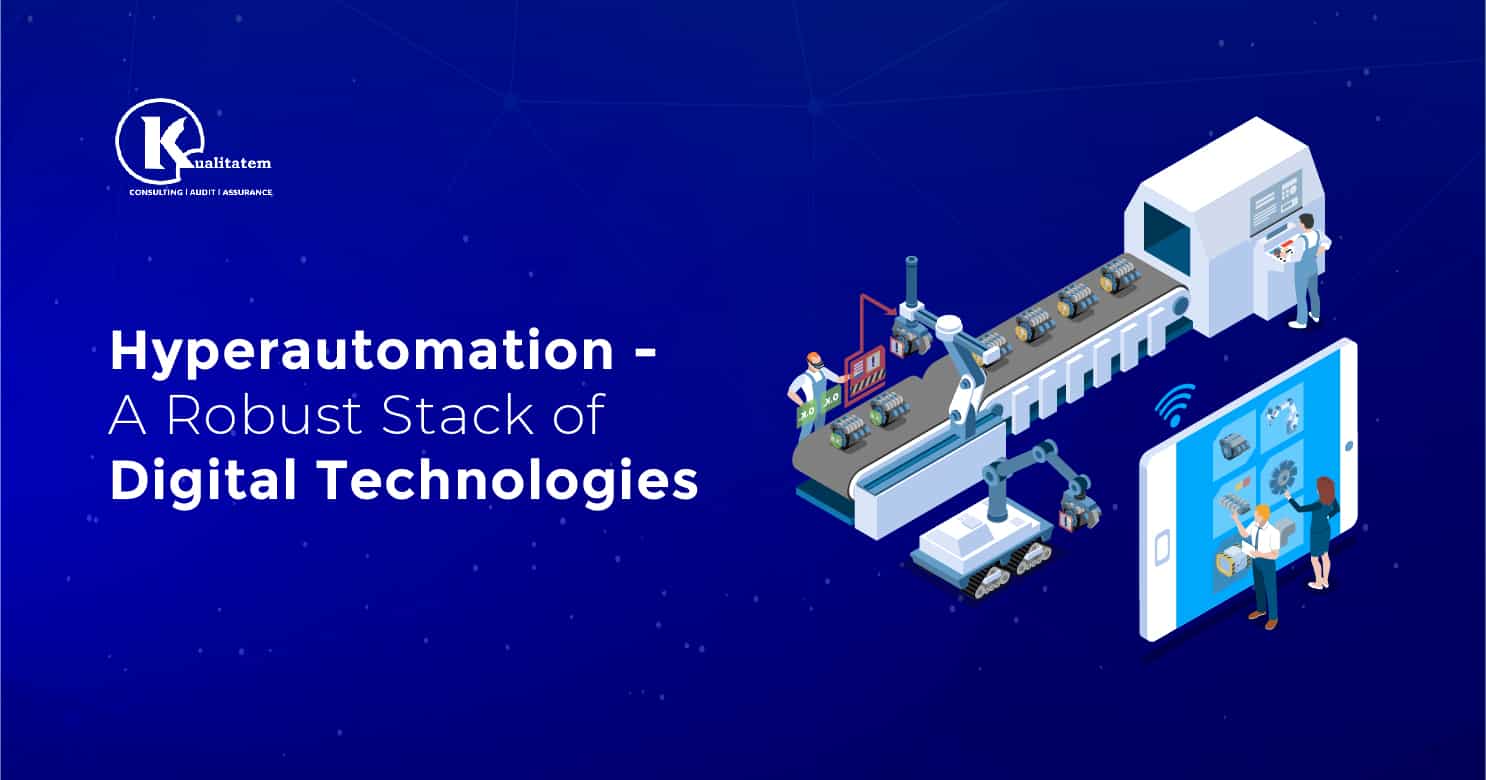Hyperautomation – A Robust Stack of Digital Technologies

- March 15, 2021
- HibaSulaiman
Gartner has listed hyperautomation at the top of the list of technology trends for 2020 and 2021 consecutively.
As we can see enterprises adopting automation rapidly, the technology and tools are also evolving, which opens doors of new opportunities for automation. Automation helps in optimizing business processes and improving product quality a great deal.
The hyperautomation market is expected to reach $200m by 2025.
What is Hyperautomation?
When robotic process automation (RPA) hit the market, many opposed its ideation. RPA involves the use of robots to mimic repetitive, rule-based tasks that are normally performed by humans. However, there were many limitations to the RPA, which included working on unstructured and focusing on a single task. Hyperautomation is an evolution in the automation sphere. It does not depend on a single technology and adds more intelligence with a set of tools. Hyperautomation focuses on automating, simplifying, discovering, designing, measuring, and managing workflows and processes across an organization. An automation testing company can create a hyperautomation solution depending on an organization’s needs.
In simple words, hyperautomation is the mix of automation and artificial intelligence that, when combined with human capabilities helps in completing processes faster and with fewer errors.
The Components of Hyperautomation
- Robotic Process Automation (RPA)
- Business Process Management (BPM)
- Artificial Intelligence (AI) or Machine Learning (ML)
- Advanced analytics
How does Hyperautomation Differ from Automation?
Automation simply involves optimization of task processes whereas hyperautomation adds an extra layer of robotic intelligence that makes the processes smarter. So we can say that if automation is about using a robot to perform tasks quicker, hyperautomation makes use of the robot’s intelligent brain to perform those tasks more smartly. This added layer of intelligence can utilize artificial intelligence (AI) technology in various forms, such as:
- Machine Learning – It allows bots to identify patterns in form of data
- Natural Language Processing (NLP) – Bots interpret human speech
- Optical Character Recognition (OCR) – Bots convert images to readable text
Benefits of Hyperautomation
One of the major benefits of hyperautomation is that it will allow employees of an automation testing company to remain updated with the latest information and business so that they can perform their roles accordingly. Instead of being occupied in low-level, repetitive tasks, they will engage with activities that help them in resolving problems and providing viable solutions.
Hyperautomation provides a business with the following additional benefits:
- It identifies and automates all business processes and other tasks by combining RPA with AI.
- It utilizes technologies and tools to manage complete automation cycles that vary from each project and assist in measuring ROI on a large scale.
- Hyperautomation using technologies to effectively combine the work between bots and humans.
What can you Achieve by Gearing your Business with Hyperautomation Technology?
The next concerns for enterprises are how the hyperautomation trend is going to affect a business and what can a business achieve by investing in hyperautomation technology.
First of all, it is vital to know that the ideation behind automation is to augment human capabilities, not to replace them. It should not threaten an individual employee’s job. Hyperautomation should not only be considered as a potential opportunity but a change that is inevitable in the near future. Gartner states, ‘hyper-automation is an unavoidable market state in which organizations must rapidly identify and automate all possible business processes.’
Businesses that have already invested in automation already know the advantages of optimizing tasks and processes through robots. However, businesses that have yet to discover the benefits of automation, need to think of robots that save you from exhausting and repetitive tasks and get better results. Once you have automated you will realize that you need to add an intelligent brain to the robots to achieve precise results. This is how hyperautomation works and helps you achieve your milestones even faster.
Getting Started with Hyperautomation
As hyper-automation involves the use of different technologies it is important for business executives to ensure investing in the right tools. This is why the ease at which the tools can communicate with one another known as interoperability – is important than ever before. If you are looking for a new tool, a good way to begin is to look for one that is:
- Easy-to-use
- Scalable
- Compatible to work different platforms and systems
Choosing the right tool that matches your automation goals is also crucial to achieving success with hyperautomation. Modern teams consist of people from different backgrounds with different skills, so finding a tool that can easily bring all team members on the same page is important. However, most automation platforms provided by automation testing services today require their users to have the ability to write and read code. Thus, a tool that eliminates this barrier can provide businesses with success in automation right from its inception.
Conclusion
As business leaders choose automation for low-level and repetitive tasks, they can earn greater insights from automated reports and apply hyperautomation to make the process even faster. It helps in identifying possible risks and opportunities more quickly and efficiently. An automation testing company should adopt advanced automation technologies and tools. By using a combination of automation techniques, hyperautomation can overcome the limitations that come with a single automation tool. This allows organizations to move beyond individual processes and automate nearly any tedious task. Organizations need to understand how advanced technologies will fit into their current workflows and how will optimize their new processes.











